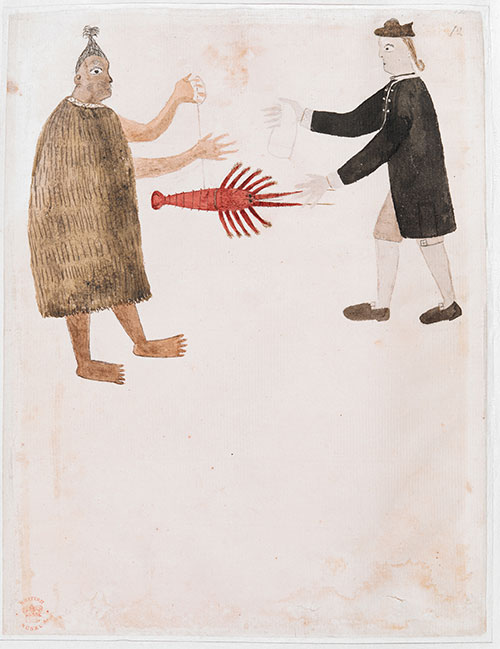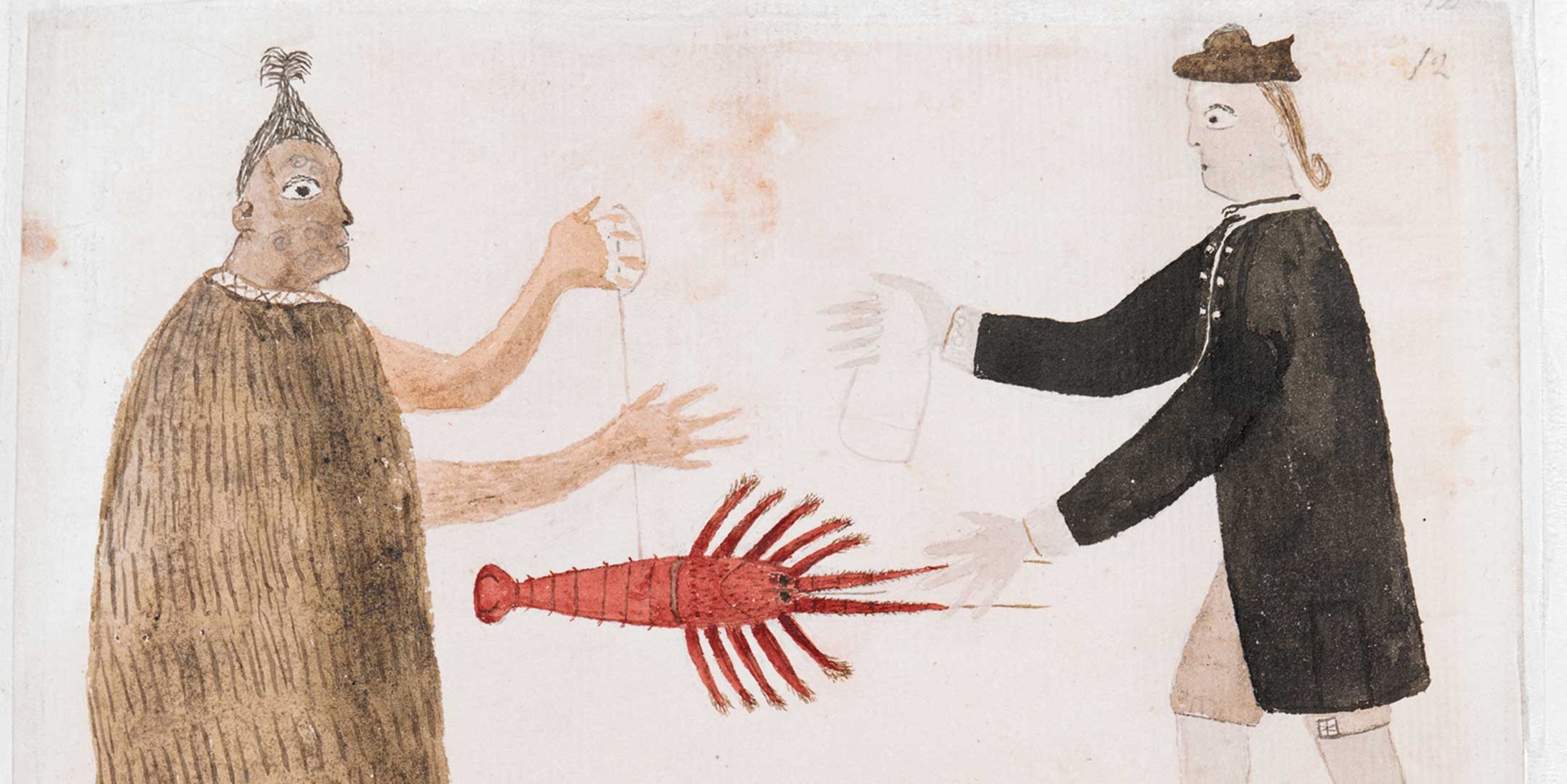Key inquiry questions:
• Who was Tupaia?
• What contributions did he make to the First Voyage of HMB Endeavour?
A Polynesian Chief
A highly accomplished star navigator, scholar and artist, Tupaia joined the HMB Endeavour as it departed Tahiti in July 1969. He was born in Ra'iatea, an island in Polynesia and held the position of high preist before his island was raided and he was forced to flee to Tahiti. There his vast knowledge provided him the powerful position of advisor and high preist to the chief Amo and his wife, Purea. His first encounter with Europeans was with Captain Samuel Wallis from HMS Dolphin.

Maori trading a crayfish with Joseph Banks, by Tupaia, 1769.
On arrival of the Endeavour to Tahiti, Banks persuaded him to join the Endeavour as he valued his knowledge of Polynesian customs, language and geography. He was to become a vital asset to the voyage producing a map of the Tahitian islands and for his role as interpreter and negotiator with the Maori people of New Zealand. His surviving artworks depict Polynesian life and their encounters between the Europeans.
Tupaia and his servant did not survive the voyage back to England dying from dysentery or malaria in 1770. Tupaia was highly regarded by crew as being 'a man of real genius' and 'an excellent artist' whereas Cook on Tupaia's death wrote in his journal, 'He was a Shrewd, Sensible, Ingenious Man, but proud and obstinate which often made his situation on board both disagreeable to himself and those about him, and tended much to promote the deceases that put a period to his life.'
View the gallery of artworks made by Tupaia on his voyage with Cook. Engage in source analysis to evaluate the artworks as evidence for understanding about the lives of indigenous people and their encounters with the Europeans.
Why are the achievements of Tupaia not more widely known?
What can we learn about European encounters in the artworks of Tupaia?
